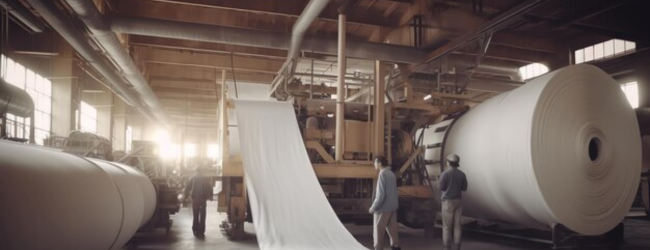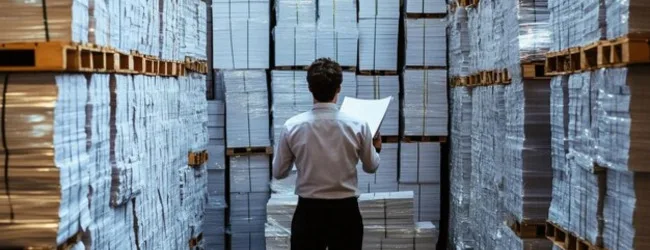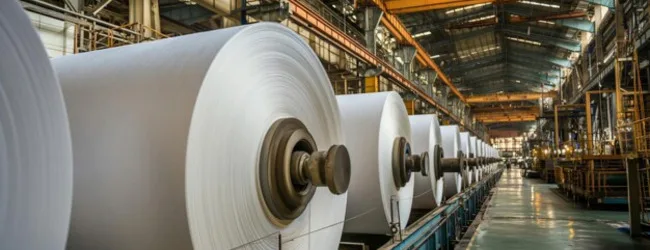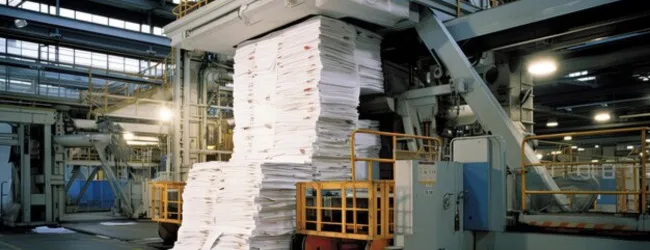Table of contents
- Why Invest in a Paper Manufacturing Business in India?
- Startup Cost: A Detailed Breakdown
- 1. Market Analysis and Feasibility Study
- 2. Business Plan Development
- 3. Legal and Regulatory Compliance
- 4. Setting Up Your Manufacturing Facility
- 5. Sourcing Raw Materials
- 6. Manufacturing Process
- 7. Marketing and Sales Strategy
- 8. Quality Control and Customer Service
- Need Expert Guidance?
- Conclusion
- Frequently Asked Questions (FAQs)
The paper manufacturing business offers a promising avenue for entrepreneurs, driven by consistent demand across various industries. From packaging to printing and hygiene products, paper remains a staple. This guide provides a detailed roadmap to help you establish a successful paper manufacturing venture, focusing on practical steps and SEO best practices.
Why Invest in a Paper Manufacturing Business in India?

- Growing Demand: Packaging, printing, and industrial sectors fuel consistent demand.
- Raw Material Availability: India has abundant sources of raw materials like bamboo, bagasse, and recycled paper.
- Government Initiatives: The Indian government promotes sustainable manufacturing and supports small and medium enterprises (SMEs).
- Export Potential: India’s strategic location allows for export opportunities to neighboring countries.
- Recycling and Sustainability: Growing awareness of environmental issues creates demand for recycled paper products.
Startup Cost: A Detailed Breakdown

The startup cost for a paper manufacturing business varies significantly based on scale and technology. Here’s a detailed breakdown:
- Land and Building:
- Industrial land: ₹50 lakhs – ₹2 crores (depending on location and size).
- Factory building construction: ₹30 lakhs – ₹1 crore.
- Machinery:
- Pulping machinery: ₹1 crore – ₹5 crores.
- Paper-making machine: ₹2 crores – ₹10 crores.
- Cutting and finishing machines: ₹50 lakhs – ₹2 crores.
- Boilers and other utilities: ₹30 lakhs – ₹1 crore.
- Raw Materials:
- Bamboo, bagasse, wood pulp, recycled paper: Variable cost depending on market prices.
- Chemicals: ₹10 lakhs – ₹50 lakhs (initial stock).
- Licenses and Permits:
- Environmental clearances, factory licenses, GST registration: ₹1 lakh – ₹10 lakhs.
- Working Capital:
- Initial operating expenses, salaries, utilities: ₹50 lakhs – ₹2 crores.
Here’s How You can Start Your Paper Manufacturing Business
1. Market Analysis and Feasibility Study

- Market Segmentation:
- Identify specific paper product niches: packaging paper, printing paper, tissue paper, specialty papers.
- Analyze demand trends within each segment.
- Evaluate the growth potential of eco-friendly and recycled paper products.
- Competitive Landscape:
- Research existing paper manufacturers, their market share, and product offerings.
- Identify potential gaps in the market and opportunities for differentiation.
- Example: India’s packaging industry is booming, creating immense demand for packaging paper. Furthermore, due to increased awareness, the demand for recycled paper is also increasing.
- Feasibility Assessment:
- Calculate startup costs, including machinery, raw materials, and operational expenses.
- Project revenue and profitability based on market demand and pricing strategies.
- Assess the availability and cost of raw materials (wood pulp, recycled paper).
2. Business Plan Development
- Executive Summary: Provide a concise overview of your business, its mission, and target market.
- Company Description: Detail your business structure, location, and team expertise.
- Market Analysis: Present your findings from the market research, highlighting opportunities and challenges.
- Products and Services: Define the types of paper products you will manufacture and their specifications.
- Manufacturing Process: Outline your production process, including raw material sourcing, pulping, paper forming, and finishing.
- Marketing and Sales Strategy: Describe your plan to reach customers, including distribution channels and promotional activities.
- Financial Projections: Include startup costs, funding sources, and projected financial statements.
3. Legal and Regulatory Compliance
- Business Registration: Register your business as per local and national regulations.
- Environmental Permits: Obtain necessary environmental clearances for water usage, waste disposal, and emissions.
- Industry Standards: Adhere to quality standards and certifications relevant to the paper industry.
- Labor Laws: Comply with labor laws regarding employee wages, working conditions, and safety.
💡 Pro Tip: If you want to start a business but have too many doubts, connect with a food business expert from Boss Wallah for guidance – https://bw1.in/1116
4. Setting Up Your Manufacturing Facility

- Location Selection: Choose a location with access to raw materials, water, and transportation infrastructure.
- Machinery and Equipment: Invest in essential machinery, including pulping machines, paper forming machines, drying equipment, and finishing machines.
- Raw Material Storage: Establish adequate storage facilities for raw materials and finished products.
- Waste Management: Implement a waste management system to minimize environmental impact.
- Mobile Friendliness & Site Speed: Ensure your website is optimized for mobile devices and loads quickly to enhance user experience and SEO.
5. Sourcing Raw Materials
- Wood Pulp: Source wood pulp from sustainable forestry operations or reliable suppliers.
- Recycled Paper: Establish a network for collecting and processing recycled paper.
- Chemicals and Additives: Source necessary chemicals and additives from reputable suppliers.
6. Manufacturing Process

- Pulping: Convert raw materials into pulp using mechanical or chemical processes.
- Paper Forming: Form the pulp into sheets of paper using paper forming machines.
- Drying: Dry the paper sheets using drying equipment.
- Finishing: Apply finishing processes, such as coating, calendaring, or cutting, to achieve desired product specifications.
- Quality Control: Implement rigorous quality control measures at each stage of the manufacturing process.
7. Marketing and Sales Strategy
- Target Market Identification: Identify your target customers, such as packaging companies, printing businesses, or tissue manufacturers.
- Distribution Channels: Establish distribution channels, including direct sales, distributors, and online marketplaces.
- Branding and Marketing: Develop a strong brand identity and implement marketing strategies to promote your products.
- Customer Relationship Management: Build strong relationships with customers by providing excellent service and support.
- Social Media: Engage with potential customers and promote your products on social media platforms.
8. Quality Control and Customer Service
- Quality Assurance: Implement a robust quality assurance system to ensure consistent product quality.
- Customer Feedback: Collect and analyze customer feedback to improve products and services.
- Customer Support: Provide prompt and efficient customer support to address inquiries and resolve issues.
Need Expert Guidance?
Starting a business can be challenging, but you don’t have to do it alone! At Boss Wallah, our 2,000+ business experts are ready to provide valuable insights and guidance. Whether you need help with marketing, finance, sourcing, or any other area of any business, our business experts are here to help you succeed- https://bw1.in/1116
Confused about Which Business to Start?
Want to start your own business but unsure which one to choose? Explore Boss Wallah, where you’ll find 500+ courses by successful business owners, featuring practical, step-by-step guides on starting and growing various businesses.
Find your perfect business idea today – https://bw1.in/1111
Conclusion
The paper manufacturing business offers significant opportunities for growth and profitability. By conducting thorough market research, developing a robust business plan, and implementing efficient manufacturing processes, you can establish a successful venture.
Frequently Asked Questions (FAQs)
- What is the initial investment required for a paper manufacturing business?
- The initial investment varies depending on the scale of operation and the type of paper products manufactured, ranging from several lakhs to crores of rupees.
- What are the essential machines needed for paper manufacturing?
- Essential machines include pulping machines, paper forming machines, drying equipment, and finishing machines.
- How can I source raw materials for paper manufacturing?
- Raw materials can be sourced from sustainable forestry operations, recycled paper suppliers, and chemical manufacturers.
- What are the legal requirements for a paper manufacturing business?
- Legal requirements include business registration, environmental permits, and compliance with industry standards and labor laws.
- How can I ensure quality control in paper manufacturing?
- Implement a robust quality assurance system, conduct regular inspections, and test products for compliance with quality standards.
- What are the profit margins in the paper manufacturing business?
- Profit margins vary depending on the type of paper products manufactured and the efficiency of operations.
- How can I compete with established paper manufacturers?
- Focus on product quality, offer competitive pricing, provide excellent customer service, and develop a strong brand identity.
- What are the environmental considerations in paper manufacturing?
- Consider sustainable sourcing of raw material, waste water treatment, air pollution control, and proper disposal of solid wastes.


